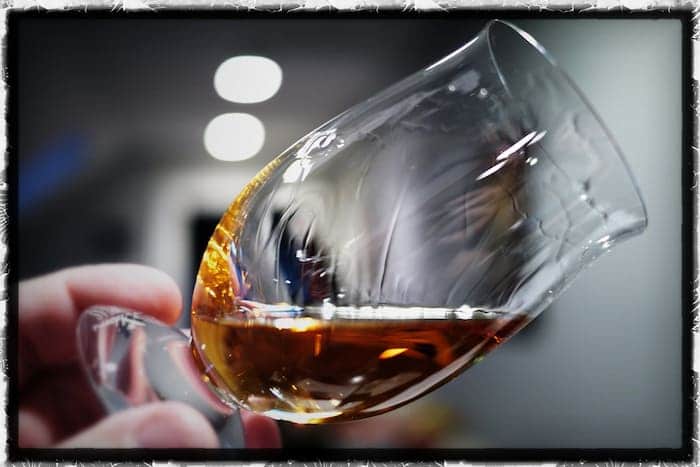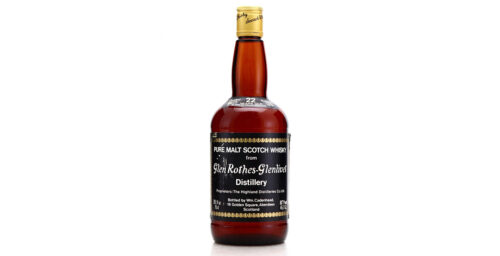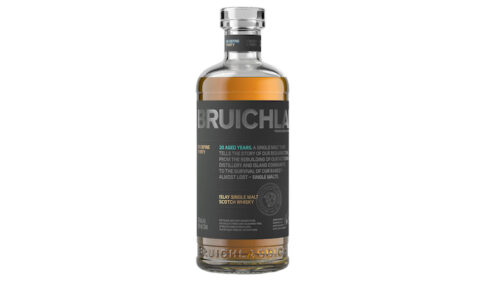Whisk(e)y tasting can be a thoughtful exercise. If full attention is paid to what’s in the glass, for that moment, the rest of the world falls away and the focus is on the whisky. Is there a proper way to taste it and know what to look out for? Well, yes and no. Everyone has their own method, and experience has shown that there is truly no exactly right way, although there are some definite wrongs when it comes to mindful whiskey tasting.
Perhaps it’s best to get those out of the way first.
1. Use the right glassware: The best glassware for tasting whisky is the one that you are most comfortable with. I personally prefer a wider glass, like an Old Fashioned glass, or a short-stemmed or stemless wine glass with a small bowl, or a brandy snifter. I find Glencairns somewhat restrictive, however others swear by them and think that’s the only vessel from which to properly taste. One thing is for certain, it should be glass, and it should be short. A tall glass with too much space between your nose and the spirit and anything made from plastic, paper, or foam (because it imparts unwanted flavors and aromas) is not going to be the best way to deliver the true properties of the whisky to your happy places.
2. Don’t swirl it violently: Whisky and wine are completely different species. Wine benefits from aeration in the glass to open it up and can always use a few vigorous swirls. Swirling whisky the same way only moves the alcohol around the glass – it doesn’t have the same live properties of wine. However, giving the whisky glass one quick swirl and setting it upright again will display its legs, that is, the trail it leaves on the sides of the glass. A thicker, slower trail shows the viscosity of the whisky, which indicates the whisky has some life to it – more maturity and boldness of character. This is also a good way to tell if the whisky was chill filtered or not – a cloudier appearance is the sign of a natural, unfiltered spirit (note: this mostly refers to Scotch styles of whisky).
3. Don’t stick your nose in the glass and take a deep inhale: Again, big distinction from wine. Deep inhalations of whisky can actually cause temporary nostril blowout and in some cases, even make you pass out. Instead, place your nose above the glass and with your mouth open, inhale in quick sniffs. This way, aromas of the whisky will more politely greet your nose and back palate.

4. Don’t listen to people who say adding water or ice is wrong: The fact is, a couple of drops of water, especially with a higher proof/cask strength single malt whisky, will allow its nuances to rise to the surface by subduing its alcoholic properties. It is changing the molecular structure of the whisky and true aficionados will argue that only purified water is best for this exercise. Adding an ice cube, especially to bourbon or rye, is also not wrong. There is a human phenomenon called retronasal olfaction, which is when flavors in the mouth make their way to the nose. Cooling a spirit with ice enhances this process when the mouth re-warms the spirit and wakes it up, giving a polished shine to the properties of high proof whiskey. My advice is to taste a spirit neat first and then add water or ice accordingly to detect the differences.
5. Loud music and flavor spoilers: It’s very hard to taste whisky properly when your sense of hearing is compromised. Try to be in an environment with a comfortable decibel level, free from other sound and sensory diversions. This truly makes a difference because sense of smell and taste should be at full capacity in order to concentrate on the whisky. What’s a “flavor spoiler”? A person who sets whisky in front of you and then tells you what you are tasting instead of allowing you to suss it out for yourself and decide. “Now you will taste banana, mint and monkey sweat.” Of course now you are tasting bananas, mint and monkey sweat because that person distracted you from your tasting experience and ruined it for you! I curtail this scenario outright by politely requesting, “Please don’t tell me what I am tasting before I’ve had the chance to assess it. Let’s discuss it together once I’ve had a couple of sips.”
6. “Heather” (as in the flower): Read whisky tasting notes from experts who grew up in Britain and that description pops up a lot. Most Americans and people outside the British Isles have no concept of heather flower, yet still write tasting notes using it, because many Scotches, particularly Highlands and Speysides, have a certain dusty floral quality about the whisky. Is that heather? Maybe. However, if you’ve never smelled or tasted heather, or another descriptor you thought about using in your tasting note that is not something you have ever come in actual contact with, find one that you have and use that instead.
With that out of the way, it’s down to what to look out for.
First of all, we can’t all be like Jim Murray – you know, that guy whose opinion determines whether or not certain whiskies will ever be available again in our lifetime. He has this whole, crazy method for tasting whisky which involves, no joke, locking himself in a shed that is completely cut off from all possible cooking aromas, and avoiding any strongly flavored foods during the entire period he writes his whisky tasting book – no spices, herbs, garlic, onions, excessive sugars or salts, etc.
The reality is, most of us will be influenced by our surroundings and what we ate that day. However, the main properties of the whisky will still come through, so ask yourself these questions when tasting and nosing:
- Is it sweet?
- If so, what kind of sweetness?
- Caramel?
- Vanilla?
- Sugar?
- Fruit?
- What kind of fruit?
- Tropical (banana, pineapple, mango, coconut, etc.)
- Apple or pear?
- Stone fruits like peaches or plums?
- Berries?
- Dried fruits?
- Stewed fruits?
- What kind of fruit?
- If so, what kind of sweetness?
- Is it smoky?
- Is it peaty (different than smoky, more rubbery)?
- Is it herbal?
- Is it salty?
- Is it spicy?
- What kind of spice – sweet or hot?
- Is it malty like a breakfast cereal?
- Does it taste of the sea?
- Is it funky?
- Does it reek of gym socks?
- Poo?
- Cheese?
- Is it medicinal?
- Is it bitter?
- Is it chocolaty? If so, what kind of chocolate (bitter, milk, malted, etc.)?
- Is it grassy?
- Is there straw, hay or oats?
- Is it leathery?
- Is it musty?
- Does it burn the throat or palate? How much?
- Is the finish smooth or hot? Short or lingering?
Remember that tasting whisky is entirely subjective. You might already know the distillery or the brand and have preconceived notions about the product based on prior knowledge, or you might have already read reviews or heard others’ reactions to it. Give every whisky a chance and evaluate them on their own merit, as though it’s a blind tasting and you have no idea where it came from. Just as every person is unique, so is every whisky. Great distilleries have produced flops; brands you thought you didn’t like might release something that appeals to you.
Basically, remember that drinking is supposed to be fun.








